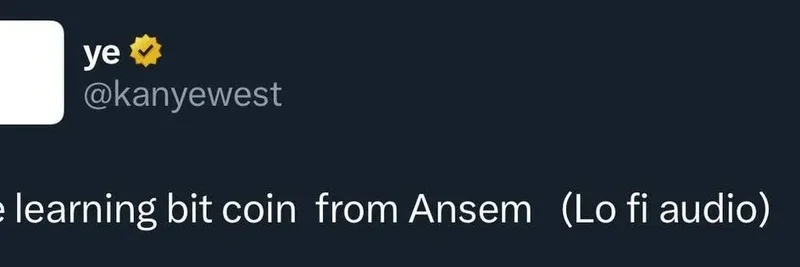GMPEPE is a BEP-20 meme token on BNB Chain that appears to be very early or lightly indexed. Below is a straightforward walkthrough of what’s visible on-chain, why public data is limited, and how to approach it safely if you’re evaluating or trading.
TL;DR
- Contract: 0xb1a5ccebbafe73001c33e8d4e7d2a667363588c0 on BNB Chain (BEP-20).
- Visibility: Limited listings on major aggregators; information may be incomplete.
- Holders: A very small holder base (report snapshots noted roughly 33 holders as of Aug 23, 2025), which implies low liquidity and higher volatility.
- Key risks: Unverified contract risk, concentration risk, and potential for illiquidity or price manipulation.
- Action: Do thorough on-chain checks before interacting.
What GMPEPE Is (and Isn’t)
- GMPEPE uses the Pepe-meme branding combined with “GM” (“Good Morning”), a common crypto greeting. Like most meme tokens, its value tends to be narrative- and community-driven rather than fundamentals-driven.
- It’s a BEP-20 token on BNB Chain, which supports smart contracts and low-cost transactions.
- There is no confirmed whitepaper, official website, or social channel referenced in public sources at the time of writing. Lack of official communication increases uncertainty.
Why You’re Seeing Limited Information
It’s common for newly deployed or low-activity contracts to be missing from big trackers. Possible reasons:
- Not yet indexed by large data platforms like CoinMarketCap or CoinGecko.
- Extremely new or very low liquidity/volume.
- Mislabeled or mistaken contract references from third parties.
- In some cases, the token may be abandoned or inactive.
When information is scarce, you’ll want to validate everything directly on-chain.
On-Chain Contract Check (Your First Stop)
Start with BscScan:
- Contract verification: Check whether the source code is verified. Unverified contracts are riskier because you can’t easily inspect logic (e.g., hidden fees or transfer restrictions).
- Holders and distribution: Look at the holder count and top wallets. A tiny holder count and heavy concentration can mean higher manipulation risk.
- Transfers and liquidity: Review recent transactions and any liquidity pool interactions.
- Tokenomics signals: If the contract is verified, scan for fee mechanisms, blacklists, max transaction limits, or mint functions.
If you’re not confident reading contract code, consider third-party audits or community reviews from reputable security firms (e.g., CertiK, PeckShield).
Market Data and Listings
- Public price data is limited or absent on major aggregators, which suggests low adoption.
- A small holder base commonly correlates with thin liquidity, wider spreads, and sharp price moves.
- Until the token is listed on widely used trackers, it’s harder to gauge fair value or volume—another reason to proceed cautiously.
Community Footprint
- No confirmed official website, X, Telegram, or Discord channels are referenced by the sources. For meme tokens, community is often the core “utility.” The lack of official channels makes it hard to assess momentum or roadmap credibility.
- If an official handle emerges, verify it against the contract address and watch for consistent messaging.
How to DYOR (Do Your Own Research)
- Verify the contract on BscScan: code status, holders, transfers, and token functions.
- Cross-check aggregators: Search on CoinMarketCap and CoinGecko for any emerging listings or notes.
- Validate social channels: If you find a website or socials, confirm they list the same contract address and are actively maintained.
- Track liquidity: Identify the primary liquidity pool (if any) and review its size, ownership of LP tokens, and any lock information.
- Start small: If you interact, test with a tiny transaction first to check for transfer taxes, slippage needs, or blocked transfers.
Where to View and Trade
If you decide to explore trading:
- GMGN: You can research and track the token here: https://gmgn.ai/eth/token/fV1R5sZ5_0xb1a5ccebbafe73001c33e8d4e7d2a667363588c0
- PancakeSwap (BNB Chain DEX): If liquidity exists, you can import the contract address into PancakeSwap and test a small swap. Double-check slippage, taxes, and whether sells work normally.
- Explorers and wallets: Use BscScan and reputable wallets like Trust Wallet or MetaMask (with BNB Chain configured) to verify balances and transactions before and after a trade.
Tip: Always confirm you’re using the exact contract address above. Imitation tokens are common, especially with meme brands.
Risks to Keep Front of Mind
- Contract risk: Unverified or complex token logic can hide transfer blocks, excessive taxes, or minting abilities.
- Liquidity risk: Small or removable liquidity can cause extreme slippage or make exits difficult.
- Concentration risk: With few holders, whales can move price rapidly.
- Market risk: Meme tokens are sentiment-driven and can trend to zero if interest fades.
- Regulatory overhang: Tokens without clear utility may attract scrutiny in some jurisdictions.
Potential Paths Forward
- If the team formalizes communications (website, X/Telegram) and verifies the contract, it can improve trust.
- Utility hooks (e.g., DeFi integrations, NFT tie-ins, or community rewards) might support longer-term interest, but none are confirmed at this time.
- Listings on mainstream trackers and stable liquidity could help reduce uncertainty for new participants.
Useful Links
- Contract on BNB Chain: BscScan: 0xb1a5ccebbafe73001c33e8d4e7d2a667363588c0
- BNB Chain basics: BNB Chain
- Wallet setup and safety: Trust Wallet, MetaMask
- Market trackers: CoinMarketCap, CoinGecko
- Security research: CertiK, PeckShield
Bottom line: GMPEPE exists on BNB Chain but currently shows limited public data and a small holder base. Treat it as high risk, verify everything on-chain, and never allocate more than you can afford to lose.




